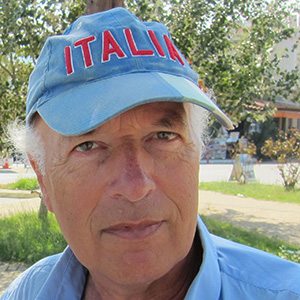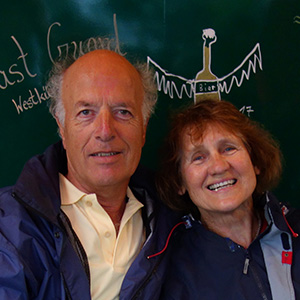The big, rough sea –
World ports and globalization
We, Aafke Steenhuis and Jan Joost Teunissen, love ports and the sea. Port cities have a fascinating and rich history. They are places where, in addition to goods, cultures, philosophies and religions are exchanged and spread. The people who live there have an open, international view. We like the open, adventurous atmosphere of port cities. In recent years we have visited many, in Asia, in Europe, in South and North America and Africa. We made drawings, photos, films, and wrote chapters about them for a book about world ports and globalization.

Aafke steenhuis

Jan Joost Teunissen

Jan Joost & Aafke
Nations have been trading with one another for thousands of years. Initially, economic growth kept pace with population growth. But that changed in the sixteenth and seventeenth centuries, when European seafarers discovered new sea routes and places in North and South America, along the African coast and in Asia. The raw materials and metals they removed there made Europe rich. European capitalism took possession of the world. Yet China, with its early forms of capitalism, remained the largest economy for a long time.
The invention of the coal-fired steam engine in England in 1784 changed that. Factories were driven by fossil energy, people moved from the countryside to the factory cities, where they and their children worked long and hard days. Workers organized into unions and political parties and from the early 20th century managed to improve their standard of living through a series of social laws. Representative democracies were formed. The Industrial Revolution made European countries rich, powerful and arrogant. They colonized much of Africa and Asia.
In the second half of the 20th century, capitalist economies ran wild: the world was spanned and trapped in a global economic network. The impulses behind this were: first, the invention of the container, around 1960, which revolutionized the transport of goods. Secondly, the introduction of neo-liberalism from the 1970s onwards, with its privatizations, flexibilization of labor, weakening of unions and left-wing political parties, increasing power of capital owners, growing inequality between rich and poor, and unbridled consumerism. Third, the rise of information technology from the 1990s onwards, which further stimulated the globalization and individualization of citizens. International production chains, ports and merchant ships have been made increasingly efficient to facilitate this globalization.
World trade has multiplied since then. Globalization has boomed in the last half century, facilitated by ports. And with that, international shipping and truck transport to the hinterland of ports became an important source of air pollution and climate change. Ninety percent of world trade goes through ports and ships.
Questions that concern us are: What kind of global economy is desirable and possible in the future? What is the future of world ports and can they become sustainable?
With a book, drawings, photos and films we report on our travels and our research into the economic globalization of our fragile planet earth.


